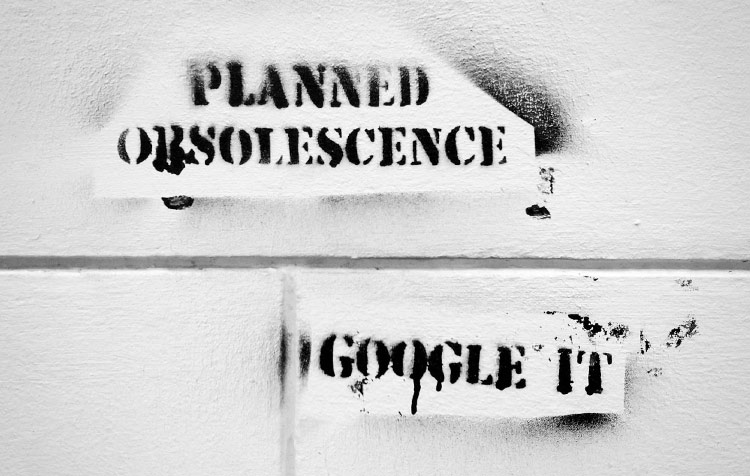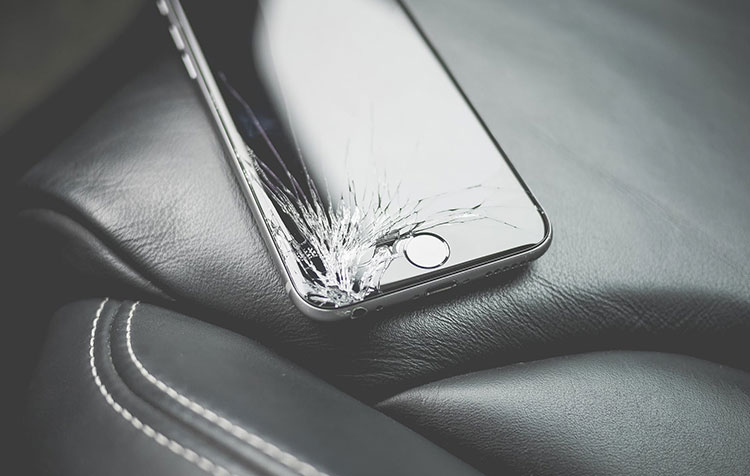What is actually planned obsolescence? Every one of us knows that moment when the TV, the hairdryer, the printer or the smartphone just doesn't work the way you were used to. And most people can't shake the feeling that certain goods break down much faster nowadays than they used to. Often even pretty much when the warranty period has just expired.
This much in advance: the feeling is not deceptive. Many manufacturers are deliberately shortening the lifespan of their products in a variety of ways - to the detriment of the consumer and the environment.
In this article, I want to give you everything you need to know about this pre-programmed wear and tear. From the definition, to different forms and examples, to possible solutions. Let's go!
In advance you can find here already a short Table of contents of the contribution:
What is meant by planned obsolescence?
Planned obsolescence is basically understood to mean a Corporate strategyThe manufacturer wants a product to become obsolete and has therefore planned for this in the factory.
So devices don't just break down randomly and for no reason, but for pre-programmed reasons. According to the Federal Environment Agency, the initial service life of many product groups examined has declined significantly in recent years.₁ This targeted approach is also referred to as planned wear and tear or product greying and is considered an important part of companies' product and consumption policies.
The different forms of obsolescence

As clear as the definition may be - the Knowledge about which companies earn money in which form with the planned wear and tear, is still quite foggy and cloudy.
On behalf of the Federal Environment Agency, the Öko-Institut and the University of Bonn a Study was carried out to eliminate precisely these ambiguities.₂ From this, the following different forms of obsolescence were ultimately identified.
Material
We speak of material obsolescence when products or their individual components are due to lack of robustness wear out particularly quickly and become unusable.
Example: The battery of a smartphone is specifically designed to lose conductivity or storage capacity particularly quickly, which apparently causes the entire device to lose its functionality.
Functional
Functional or functional obsolescence occurs when a Functional device no longer able to meet new requirements is. This is often the case when devices are equipped with new hardware and software, so that new interfaces are available.
Example: A somewhat aging washing machine does not have appropriate compartments and functions for the newly developed detergents and textiles.
Economic
Economic obsolescence is understood to mean the increasing malfunctions in the use of a productwhose necessary repairs are more expensive or only insignificantly cheaper than a new purchase.
Example: A laptop gets a repair-unfriendly product design, so consumers have to use an expensive repair service in case of malfunctions and hardly have a chance to fix the problems on their own and as cheaply as possible.
Psychological
Psychological obsolescence refers to the replacement of functional, but from the consumer's point of view out of fashion Product versions meant. In this form, trends, the desire for new functions and fashionable topicality ultimately prevail.
Example: The new smartphone of a popular brand will be equipped with a fingerprint Touch ID function, so consumers will replace their still operational, minimally older devices.
Examples of planned obsolescence from PRaxis
The technical devices of Apple are a fine example of planned obsolescence. Of course, the company does not build an obvious self-destruct mode into its products. Instead, however, it makes independent repair more difficult, changes the ports for headphones and charging cables more frequently - and also ensures that users can clearly distinguish old and new devices by constantly changing colors and designs and subsequently force a new purchase.
A prominent example of functional obsolescence is also the company's Microsoftthat introduced a new operating system that was no longer supported by computers running the XP operating system.
Another personal example: In a previous company project, we looked for partners from the washing machine industry. There, the managing directors of a company known throughout Germany told us behind closed doors that the machines are built in such a way that they have to be replaced after about 2-4 years.
What can be done about planned obsolescence?
The planned wear and tear can be hidden pretty well. But besides the Start or support online petitions against this grievance, there are a few more things consumers can implement.
Here I have compiled a small overview for you:
- Buy old equipment
- Avoid buying cheap junk
- Prefer trusted dealer
- Ignore useless trends
- Observe test marks, customer ratings and guides
- Take the opinions of other consumers seriously
- Report suspected obsolescence (Murk)
- Ask for spare parts and repair yourself
- …
Can you think of other ideas that consumers can take to heart? Then feel free to write me a comment!
Tip: How you conserve natural resources in everyday life you can learn in the linked article!
Planned obsolescence must come to an end!
The core business idea of planned obsolescence is to manufacture products so that they last only as long as necessary, but definitely not as long as possible. The economic incentive to let new goods die on time is undeniable - but the cost of this manipulated, shortened product lifespan is ultimately paid by consumers and the environment. Fortunately, we have opportunities to steer clear of correspondingly short-lived products, even if they are not always easy to spot.
Do you have any questions, tips or your own experience with planned obsolescence? Then, as always, feel free to leave me a comment below this post.
Stay sustainable,

PS.: The profit of many companies is based on the expense of nature. At Externalization of Environmental Costs you can now find out exactly how they do it and what consumers can do about it.
References:
₁,₂ Umweltbundesamt: Einfluss der Nutzungsdauer von Produkten auf ihre Umweltwirkung: Schaffung einer Informationsgrundlage und Entwicklung von Strategien gegen "Obsoleszenz" (Stand: Februar 2016), available at https://www.umweltbundesamt.de/publikationen/einfluss-der-nutzungsdauer-von-produkten-auf-ihre-1 [28.10.2021].






